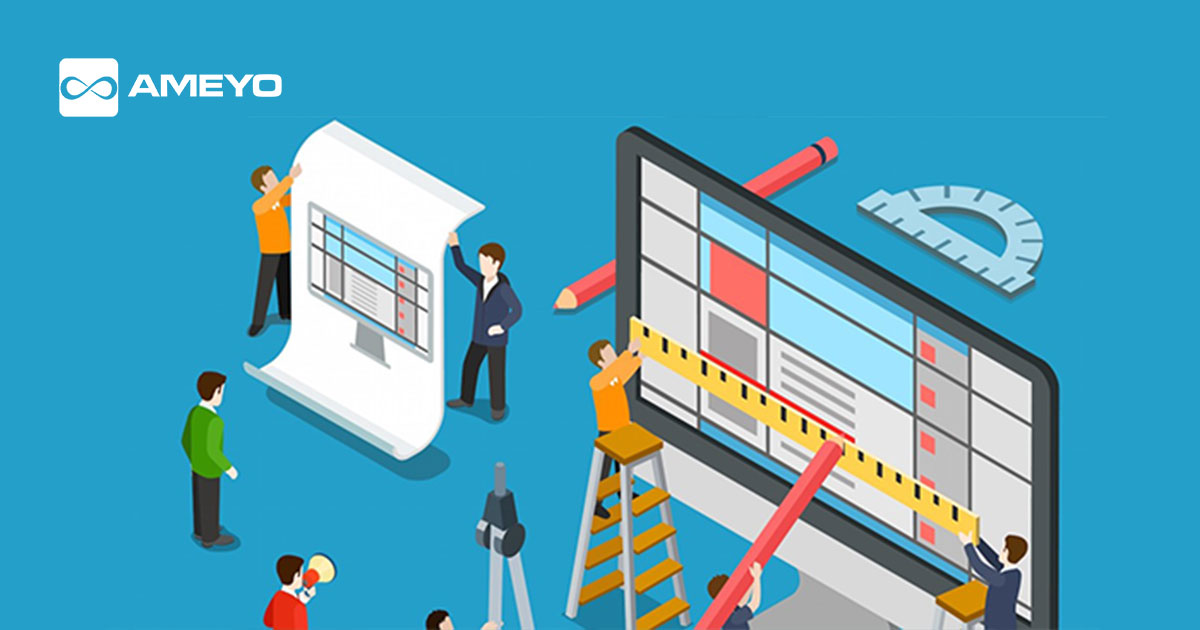User Experience (UX) of a call center application plays an important role in determining the satisfaction level of end users, i.e. customers. It has a direct impact on many important KPIs that contact centers use to determine the effectiveness and performance of their contact center as a whole.
A UX should do a particular job for which it has been designed efficiently and without compromising the convenience of the users of these applications. Very often, contact centers forget that the convenience of end users should get the highest priority in an organization in the service sector.
Fonolo uses 17 important statistics to establish the importance of customer experience and how it can impact your business. It states that Forrester has shown in a survey report that – 89% of customers would leave a brand if their concerns are not addressed properly or there is poor user experience. Even 60% customer service managers according to Ovum, as stated in Fonolo’s blog post, consider customer satisfaction or experience to be the most important KPI for a contact center.
How do different technologies impact customer satisfaction?
Call volume is still critical for most call centers because there are issues that need to be resolved first when it comes to self-help portals, email or tweet response, web chat with a chatbot and other online media interactions. A call center should try to integrate each into its omnichannel communication without making it even harder for consumers to communicate than it was before. Ultimately, use of a new technology should be for customer convenience and faster resolution of a problem.
Customers often hate to call a contact center because they know that they would be put on hold for a long time. Also, auto-dialers and other intuitive technologies still face problems because of inadequate information on the database and often lack agent strength. Moreover, some applications used by contact centers are not compatible with the ecosystem used for work and further hold up the entire process. A call center business is completely transactional in nature and hence time holds great essence. However, time is what often leads to the downfall of a company.
Why should agents not be blamed singularly for less than encouraging KPIs?
Agents are often blamed when the customer resolution time or average handling time in a call center goes up. However, both customers and the management of contact centers should know that agents are oten asked to work with outdated and defunct software and applications which don’t cooperate. As a result, the efficiency level drops significantly.
Now, if this problem has become endemic, then the problem compounds further because that would mean there is a hurdle or bottleneck at every step of the resolution process. That would lead to lower customer retention, problems in new customer acquisition, drop in customer satisfaction, drop in employee satisfaction and motivation levels, and ultimately loss of business, leading to falling sales figures and revenue.
A solution would be to replace the old and antediluvian applications and tools, used in a call center with new ones that provide better user experience. Also, it is important for agents to receive proper training so that they can focus completely on how to solve a customer problem at hand and not worry in addition to how to use a particular application. Furthermore, the number of steps of resolution should be optimized to reduce AHT. It should be seen that agents are not forced to look for information about the customer or solution in multiple systems or force a customer to interact with multiple agents. This would increase the time of wait at the queue and negate even a modicum of customer satisfaction that was left.
How to improve UX considerations of call center applications?
- Stop focusing overly on graphic: An agent screen should help him to reduce his response time when looking for critical information. So, although graphics, beauty and display settings shouldn’t be completely ignored, it should be remembered that if it leads to further wait for the customer or drop in speed during the after-call work, it should be not changed.
- Process flow should not be interrupted: The main agent screen displays a lot of useful information that are helpful at all times. Now, if pop-ups and alerts continuously flood an agent and block the main view, while providing information which is far less important than those already present on the screen, the whole process becomes counterproductive. The screen should be customized and alerts sent with permission of agents because the management doesn’t deal with clients but the agent does. Therefore, it is important that agent convenience and preference is taken into consideration to improve customer satisfaction.
- Design applications which can be used by agents with different skill levels: Contact centers due to cost considerations should and usually do use a single system and software across many verticals and business processes. But when these are designed, the skill level of all agents should be considered. Opinion of master agents matter but those of novices matter too, especially since there is a high attrition rate in call centers.
- Agents are not designers and coders: It is imperative that agents get adequate training to acclimatize with the software and ecosystem. If an agent is happy with the resources at his disposal, there is a greater chance that he would be able to deal with customers better and keep them happy.
A contact center application should be practical and easy to use. Since a change in design made in applications in a call center with respect to usability can leave an immediate and tangible impact on customer satisfaction and retention. Hence, this aspect shouldn’t be dismissed or ignored. When the UX is upgraded in an application, it should be able to alleviate pain points and remove the hurdles that prevent effective communication and resolution.


